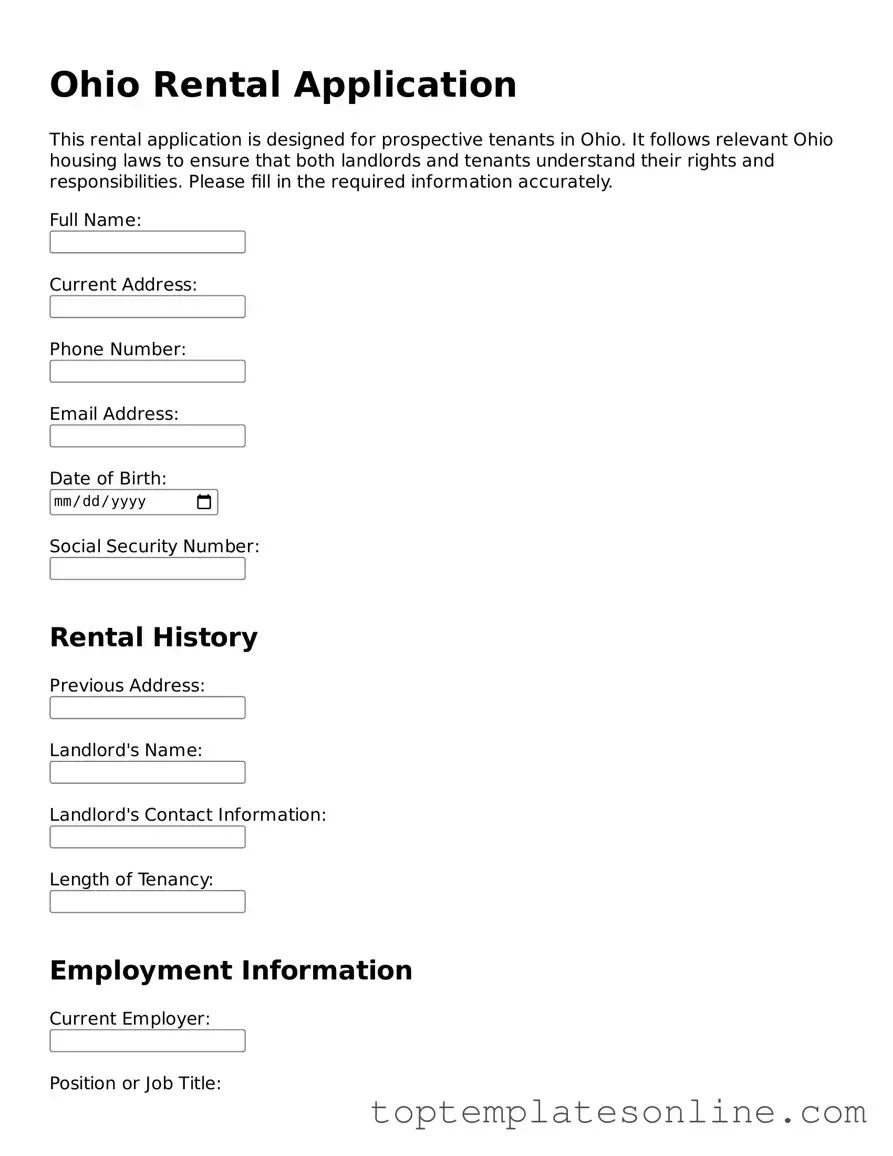Blank Rental Application Template for Ohio State
The Ohio Rental Application form is a document used by landlords to collect essential information from prospective tenants. This form typically includes details such as personal identification, employment history, and rental history. Completing the application accurately can significantly influence the rental approval process.
Customize Rental Application Here
